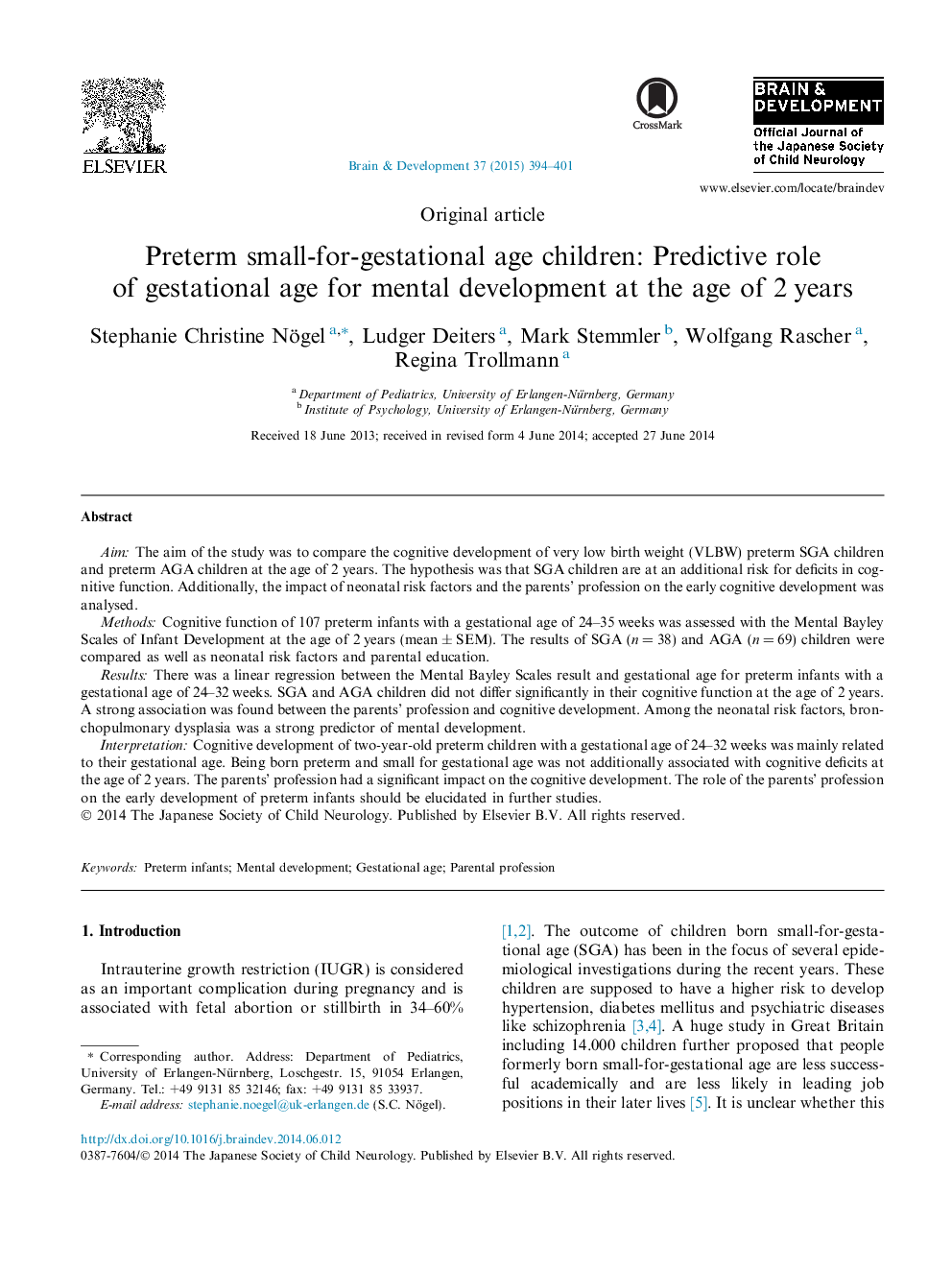| Article ID | Journal | Published Year | Pages | File Type |
|---|---|---|---|---|
| 3036715 | Brain and Development | 2015 | 8 Pages |
AimThe aim of the study was to compare the cognitive development of very low birth weight (VLBW) preterm SGA children and preterm AGA children at the age of 2 years. The hypothesis was that SGA children are at an additional risk for deficits in cognitive function. Additionally, the impact of neonatal risk factors and the parents’ profession on the early cognitive development was analysed.MethodsCognitive function of 107 preterm infants with a gestational age of 24–35 weeks was assessed with the Mental Bayley Scales of Infant Development at the age of 2 years (mean ± SEM). The results of SGA (n = 38) and AGA (n = 69) children were compared as well as neonatal risk factors and parental education.ResultsThere was a linear regression between the Mental Bayley Scales result and gestational age for preterm infants with a gestational age of 24–32 weeks. SGA and AGA children did not differ significantly in their cognitive function at the age of 2 years. A strong association was found between the parents’ profession and cognitive development. Among the neonatal risk factors, bronchopulmonary dysplasia was a strong predictor of mental development.InterpretationCognitive development of two-year-old preterm children with a gestational age of 24–32 weeks was mainly related to their gestational age. Being born preterm and small for gestational age was not additionally associated with cognitive deficits at the age of 2 years. The parents’ profession had a significant impact on the cognitive development. The role of the parents’ profession on the early development of preterm infants should be elucidated in further studies.
